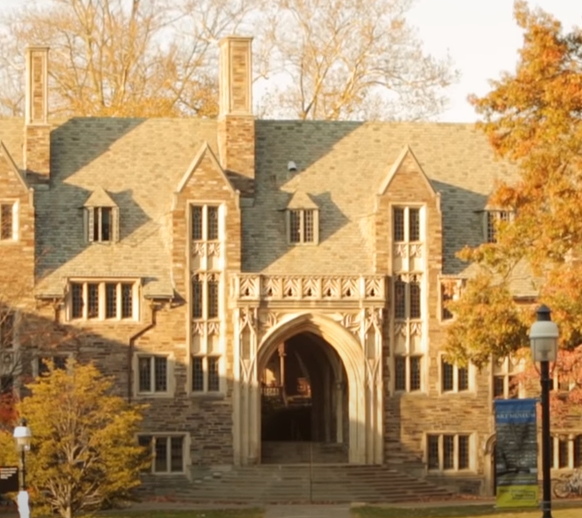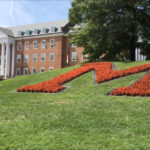Indoctrinating Students to Hate Whiteness: Racial Self-Flagellation on Campus

Since the unfortunate deaths of George Floyd and a number of other black individuals in interaction with law enforcement, campuses across the country have been roiled by paroxysms of self-righteous indignation over race, white police racism and purported attendant brutality, and the alleged existence of endemic racism in society and its major institutions—including, specifically, universities.
In fact, there is so little actual racism on American campuses that race-obsessed grievance activists have had to invent new, previously unseen sources of racism. Thus, suddenly campus buildings named for benefactors from hundreds of years ago are denounced because the donors had owned slaves. Whole campuses are considered illegal and purloined because they supposedly sit on lands previously inhabited by indigenous peoples. Statues of campus notables with a shady past have to be moved, torn down, or shattered. At Princeton, as one notable example, the public mea culpa over the supposed prevalence of racism on its campus by President Christopher L. Eisgruber was so public that it actually resulted in a surprising investigation for possible violations of federal antidiscrimination law (under Title VI of the Civil Rights Act of 1964) against the university by the Department of Education.
Identifying anti-black racism was the first step in elevating and asserting that racism existed in a systemic, endemic, and institutional way. But was what was also important was to not only elevate blacks by recognizing their longstanding oppression, but then by making whites feel guilty about their so-called white privilege and their intended or unintended roles in continuing racism against blacks.
Thus, on campuses now sensitivity training has not discussed what constitutes racism on the part of white people, but also about the fundamental defects of white people, of being white itself, as a way of flipping the paradigm and destroying the notion of white supremacy and white privilege. As part of that process, a whole new genre of whiteness studies emerged, and, in the case of critical whiteness studies, specifically, the goal was not only to reveal for white people their own privilege and roles as oppressors, but to shatter the belief that this supremacy and dominant role in society were going to be tolerated any longer, and that white people, whether they knew it or not, were fundamentally racist by virtue of their skin color alone and needed to address that with self-reflection, self-critique, and self-denunciation.
It is not enough, if a student is white, to merely not be a racist, to not promulgate racism, to not exhibit or articulate bias toward non-whites. To be an anti-racist, if a student is white, he or she has to go beyond that by recognizing that their whiteness itself signifies a social defect, that being white means being imbued with privilege, supremacy, and oppression and that they must always be aware of that when they interact with non-whites. Moreover, they must repent of their ever-present, corrosive racism—implied or overt, intentional or unintentional—and be conscious that they are always complicit in racial inequality in the larger world around them simply by virtue of their skin color. With the recognition that they are in a moral trap from which they can never escape should come shame, self-denunciation, and self-loathing for being an oppressor.
The grievance campus bureaucrats, of course, have been eager to confirm and reinforce this racial inquisition, and the ubiquitous university administrators—with their fiefdoms of diversity and inclusion—eagerly guide minority students through the process of seeing themselves as victims while simultaneously making sure that white students become aware, if they are not already, of just how complicit they are in perpetrating the lingering racism and marginalization of their fellow non-white students.
As one troubling example of this process, Brandeis University’s Office of Diversity, Equity and Inclusion recently created a whites-only “space” where students can participate in a voluntary six-week anti-racist training program so, since they are apparently ignorant of this already, they can “come to a deeper understanding about how whiteness moves.”
Although negative reactions to the concept of the whites-only program have motivated Brandeis, to remove public postings about it, the program as conceived astoundingly segregates the white students during their “racial sensitivity conditioning” and prevents them from interacting with non-white peers until they have completed the training. Why? So they do not “cause harm,” as Joy von Steiger, Ph.D., Director of Mental Health Education and a “racial justice educator” who runs the program, put it. “It doesn’t have to be kumbaya, but white folks in particular have to have done enough work” to interact “safely” with minorities. Only after white students have been thoroughly inculcated with the totality of their racism can they then engage in “cross racial dialogues” with their non-white peers. After completing the program’s two sections, “White Students Discussing Anti-Racism” and “From Ally to Accomplice: Taking Action in Your Anti-racism Journey,” the white students should be sufficiently humbled by having been made aware of their latent racism.
The program’s reading list is peppered with the de rigueur pop culture racism handbooks, including, of course, Ibram X. Kendi’s How to Be an Antiracist. Kendi’s theory is that racism is prevalent and unrelenting, that “racism has spread to nearly every part of the body politic,” “heightening exploitation,” even causing “arms races,” and “threatening the life of human society with nuclear war and climate change.” And since Kendi defines a racist as anyone who supports “a racist policy through their actions or inaction,” white readers of his book, whether they are woke or not where racism is concerned, find themselves as being complicit in a society built on and ever-promoting racism.
Another suggested book is Robin DiAngelo’s best-selling White Fragility: Why It’s so Hard for White People to Talk about Racism, which, according to black Columbia University professor and linguist John McWhorter, “teaches that Black people’s feelings must be stepped around to an exquisitely sensitive degree that hasn’t been required of any human beings.” Professors Craig Frisby and Robert Maranto confirmed that same view, suggesting that DiAngelo’s premise reminds white people that their privilege requires them to cautiously interact with non-whites to suppress their innate racism. “In the White Fragility universe,” they write, “whites are inherently oppressive, and African Americans (and by extension all ‘people of color’) serve only as victims around whom whites must walk on eggshells to avoid triggering deep emotional pain.”
Brandeis was not the first school to develop courses to help white students feel badly about their ethnicity. In 2015, Arizona State University offered what became a controversial course called “U.S. Race Theory & the Problem of Whiteness,” taught by professor of English Lee Bebout. In describing his teaching, Bebout clearly believed in the currently popular concept of intersectionality, a commonality that victim groups share by being similarly oppressed. In a journal article, “Skin in the Game: Toward a Theorization of Whiteness in the Classroom,” Bebout wrote that “Like many scholars of ethnic studies, my courses daily explore instances and legacies of racism, sexism, homophobia, class oppression, and other manifestations of inequality.”
The University of Wisconsin-Madison offered a similar course in 2016, “The Problem of Whiteness,” which was greeted by many with the same disdain. Taught by Professor Damon Sajnani, in the African Cultural Studies program, the course description asked students, “Have you ever wondered what it really means to be white? If you’re like most people, the answer is probably ‘no.’ But here is your chance!” And the goal was clearly to help white students see that their whiteness is fraught with defects, and this self-reflection will help them realize the downside of being white. “In this class,” the course description reads, “we will ask what an ethical white identity entails, what it means to be #woke, and consider the journal Race Traitor’s motto, ‘treason to whiteness is loyalty to humanity.’”
A class at Ohio State University, “Crossing Identity Boundaries,” was offered to teach students how to detect white privilege and microaggressions, those instances of racism so subtle and invisible that they are often exhibited without any conscious participation by either the perpetrator or the victim. A Hunter College (part of the City University of New York ) course, “Abolition of Whiteness,” went even further than others by questioning if “whiteness” itself—that is, not being racially white but being culturally, socially, and economically defined by “whiteness”—should even be allowed to exist. The course examined (critically, of course) “how whiteness – and/or white supremacy and violence – is intertwined with conceptions of gender, race, sexuality, class, body ability, nationality, and age.”
And a Stanford University course called “White Identity Politics” had students “survey the field of whiteness studies” and discuss even “including abolishing whiteness or coming to terms with white identity.” Asserting solemnly that “the 2016 Presidential election marks the rise of white identity politics in the United States,” the course description for the anthropology seminar asked: “Does white identity politics exist?” and “How is a concept like white identity to be understood in relation to white nationalism, white supremacy, white privilege, and whiteness?”
In the current feverish conversation about race and racial justice on university campuses, well-intentioned people, white and black, have called for self-examination as a way of seeking to eliminate any vestiges of racism, bigotry, and ethnic bias. To the extent that racism even exists on university campuses, it is of course useful and necessary to identify and eliminate it. But if that process now includes, as clearly it does, devaluing being white, eliminating whiteness itself, and compelling white students to evaluate their unconscious roles as oppressors and confront the guilt of harboring racist feelings in the first place, then the university’s legitimate role in mitigating actual racism is being transformed into something untoward that creates new victims of racism: namely, white students.
In an effort to elevate the self-esteem of their black students, universities are now promoting programs seeking to impose a self-hatred on white students, not because this is actually of benefit to white students but as a way of making their non-white peers feel better about themselves. Making victims of one group to undo bias aimed at another group of victims is neither just nor equitable, and certainly not the role of universities to be social engineers chasing a dream of realizing racial justice for only one chosen group.
Richard L. Cravatts, Ph.D., a Freedom Center Journalism Fellow in Academic Free Speech and President Emeritus of Scholars for Peace in the Middle East, is the author of Dispatches From the Campus War Against Israel and Jews.




